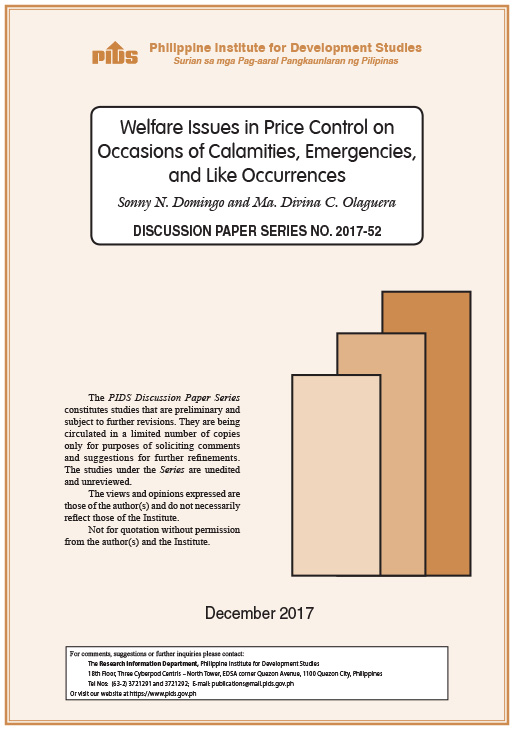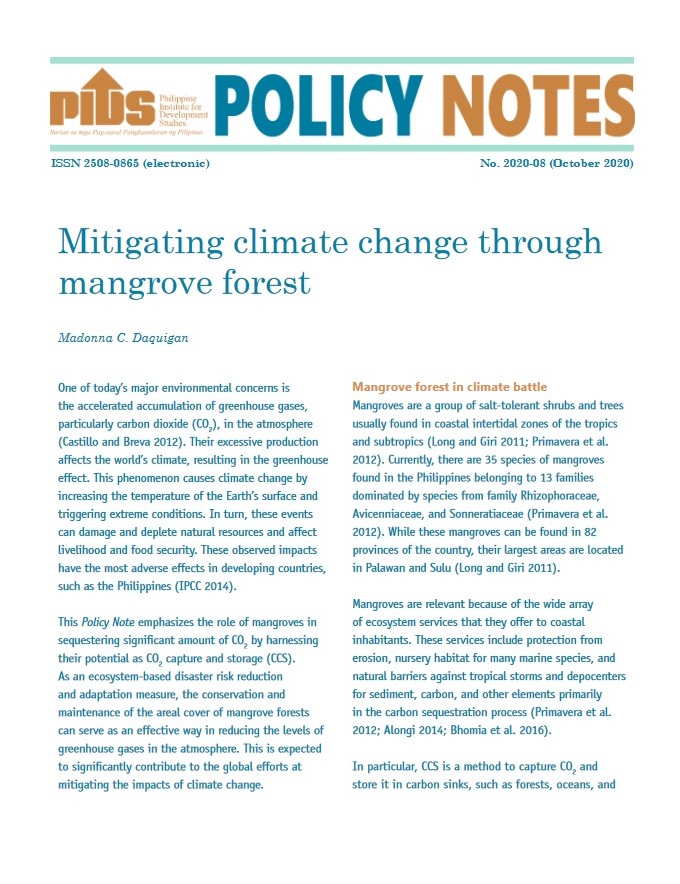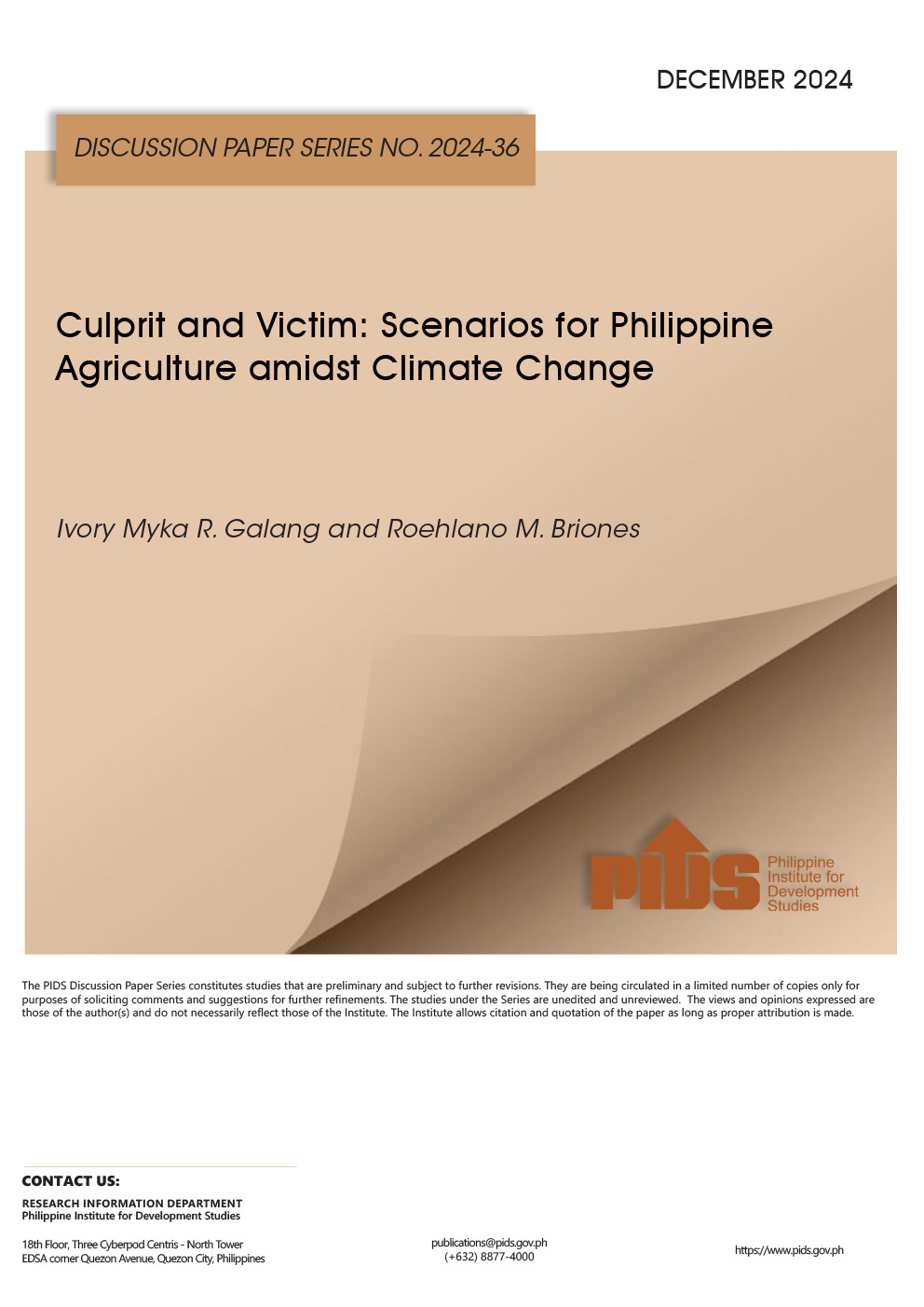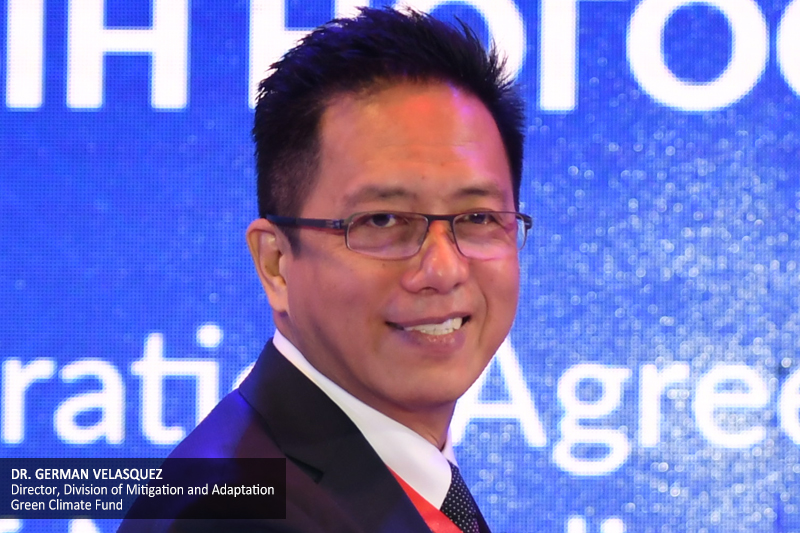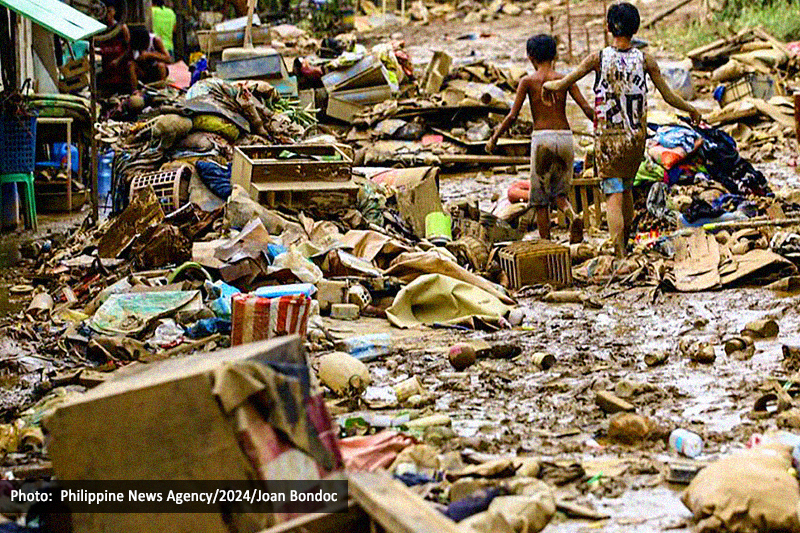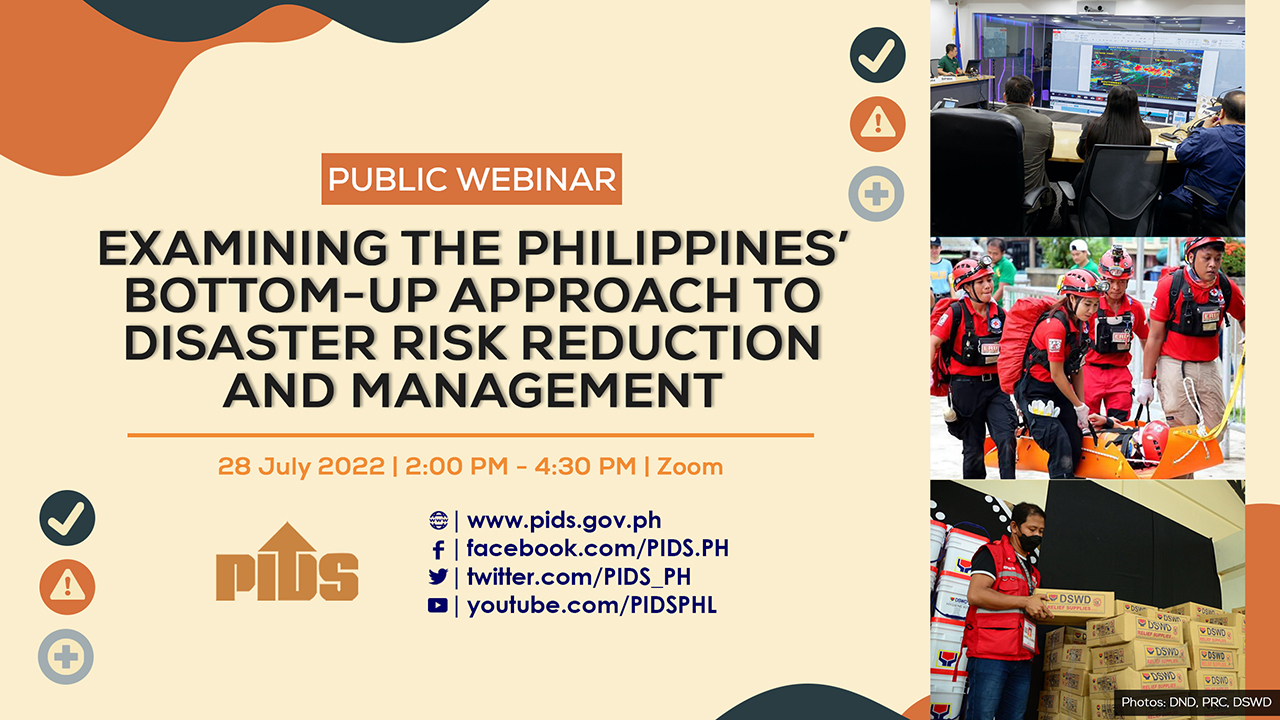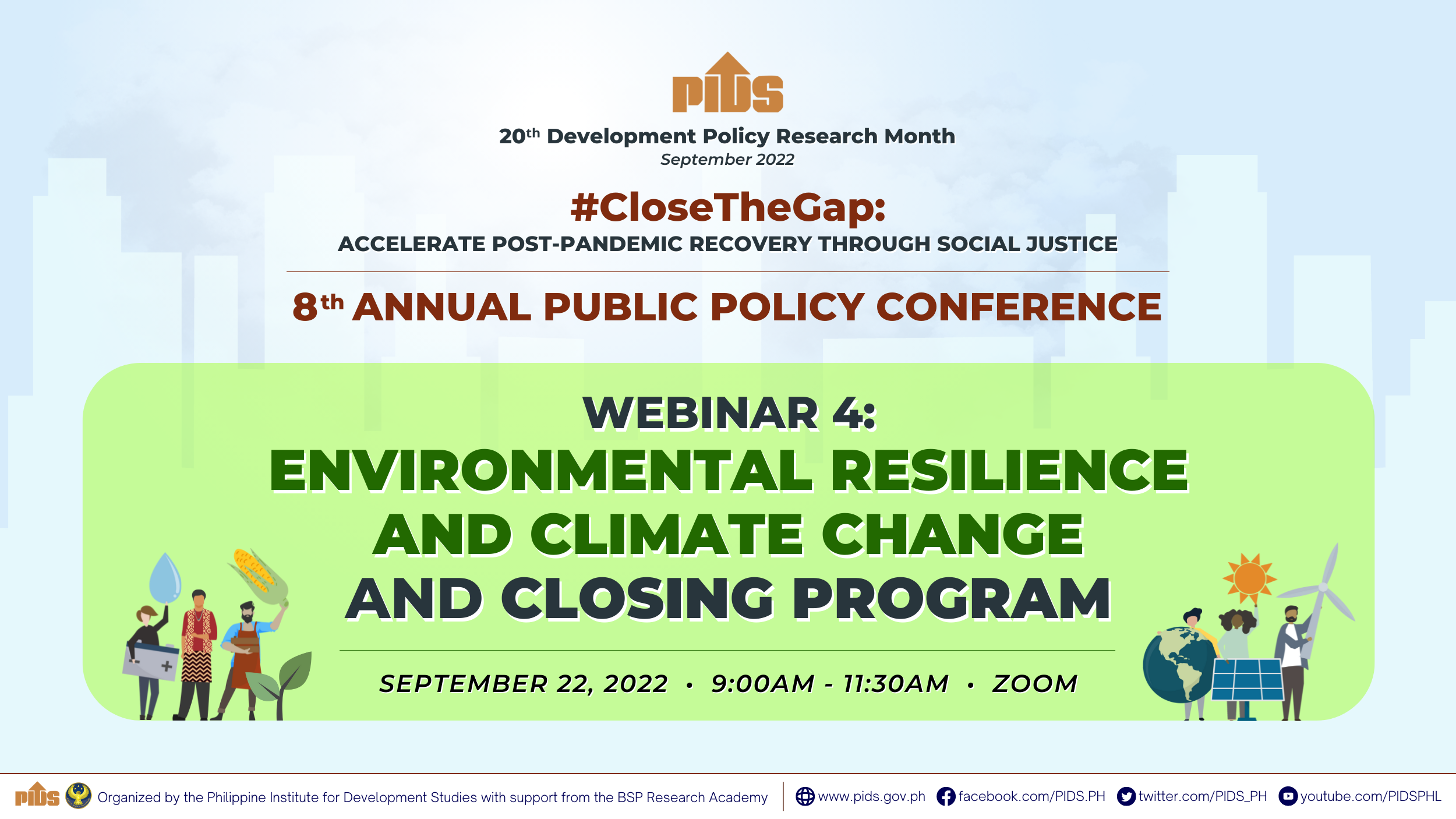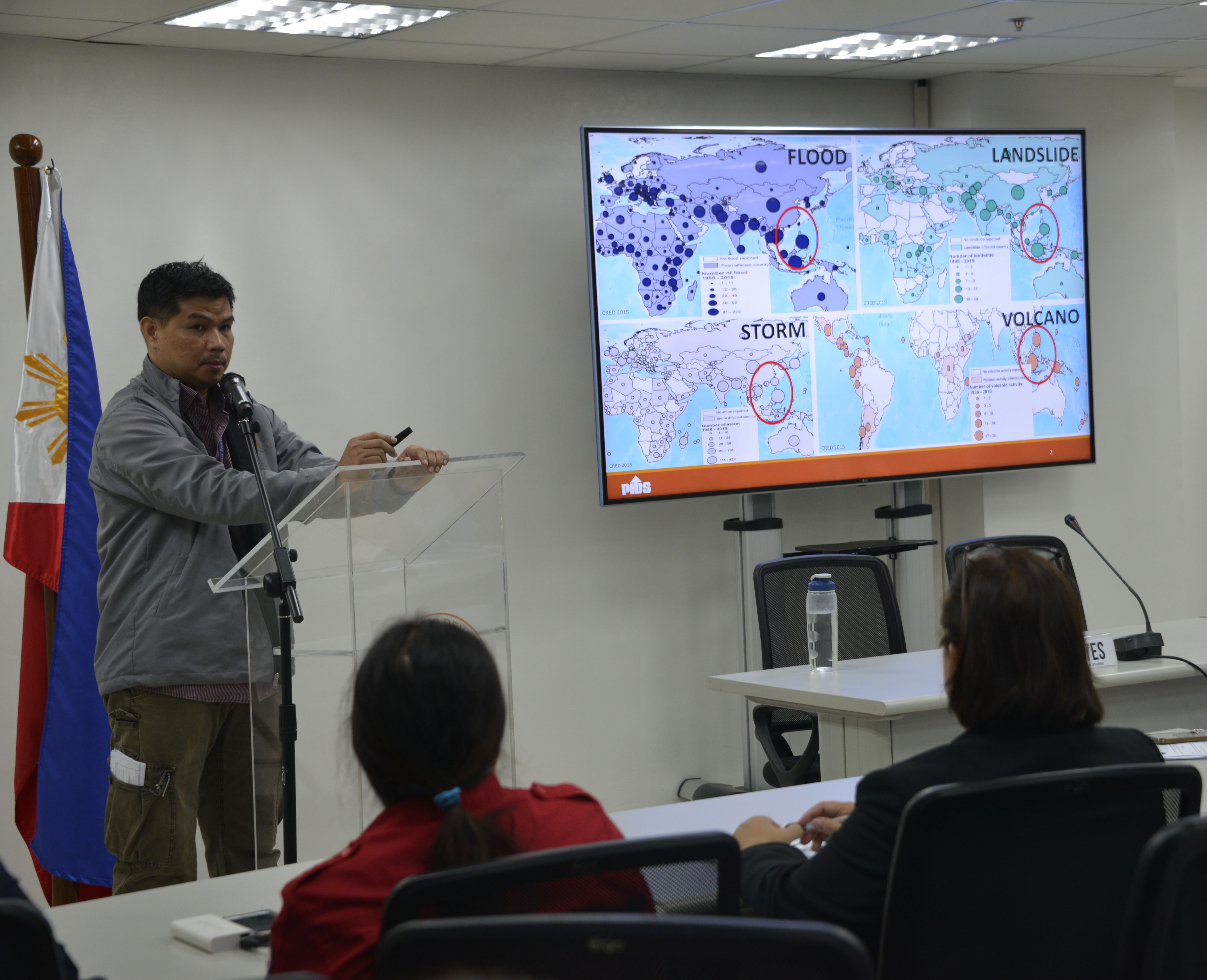
State think tank Philippine Institute for Development Studies (PIDS) calls on Congress to hasten the passing of a bill creating a new institutional platform to close the gaps between disaster risk reduction and management (DRRM) and climate change adaptation (CCA) in the country.
According to PIDS Senior Fellow Sonny Domingo, the proposed law that supports the creation of a disaster management ‘super body’ is seen as a positive step to address long-standing issues on DRRM and CCA. “We see a lot of divisions and incoherence between DRRM and CCA. The new policy direction is to have a more integrated and unified approach in establishing structures, institutional platforms, and processes,” Domingo said during a recent public seminar organized by the Institute.
Domingo pointed out that these gaps stem from the undefined roles and functions, as well as the weak institutional arrangements and collaboration among agencies handling DRRM and CCA. In the current setup, DRRM is under the National Disaster Risk Reduction and Management Council, an ad hoc coordinating body composed of around 44 government institutions authorized to craft policies as well as integrate, supervise, monitor, and evaluate disaster-related operations in the country. CCA, meanwhile, is lodged with the Climate Change Commission (CCC).
Budget allocation is also a major concern. Section 21 of RA 10121, also known as the Philippine DRRM Act of 2010, requires local government units (LGUs) to set aside 5 percent of their estimated revenue to support DRRM initiatives and programs. CCA has no definite funding source. Nevertheless, in terms of expenditure tagging, the CCC has a clear system of tracking its expenses whereas the NDRRMC has no structured mechanism to monitor its spending.
Domingo also noted the weak translation of national policies and programs into local plans particularly in mainstreaming DRRM and CCA in the comprehensive development plans (CDPs) and comprehensive land use plans (CLUPs) of LGUs. He also shared that there are discrepancies in the annual investment plans (AIPs) of most LGUs and that they are unable to apportion funds for DRRM- and CCA-related programs and initiatives in their AIPs.
Other contributory factors to the growing gap between DRRM and CCA are the weak reporting and feedback mechanisms among concerned national and regional offices as well as the poor or lack of strategies in communicating policies at the grassroots. The frequent turnover of leadership in both national and local levels is also considered a major stumbling block in the continuity of implementing DRRM and CCA flagship programs and initiatives.
To resolve these issues, Domingo recommended several measures, including augmenting the capacities of DRRM and CCA key players, mainstreaming DRRM and CCA in the CLUPs and CDPs of local governments, formulating and adopting standards in monitoring and evaluating plans and expenditures, having an actual inventory of assets or resources on DRRM and CCA, and establishing a good structure for relaying information and giving feedback. ###
According to PIDS Senior Fellow Sonny Domingo, the proposed law that supports the creation of a disaster management ‘super body’ is seen as a positive step to address long-standing issues on DRRM and CCA. “We see a lot of divisions and incoherence between DRRM and CCA. The new policy direction is to have a more integrated and unified approach in establishing structures, institutional platforms, and processes,” Domingo said during a recent public seminar organized by the Institute.
Domingo pointed out that these gaps stem from the undefined roles and functions, as well as the weak institutional arrangements and collaboration among agencies handling DRRM and CCA. In the current setup, DRRM is under the National Disaster Risk Reduction and Management Council, an ad hoc coordinating body composed of around 44 government institutions authorized to craft policies as well as integrate, supervise, monitor, and evaluate disaster-related operations in the country. CCA, meanwhile, is lodged with the Climate Change Commission (CCC).
Budget allocation is also a major concern. Section 21 of RA 10121, also known as the Philippine DRRM Act of 2010, requires local government units (LGUs) to set aside 5 percent of their estimated revenue to support DRRM initiatives and programs. CCA has no definite funding source. Nevertheless, in terms of expenditure tagging, the CCC has a clear system of tracking its expenses whereas the NDRRMC has no structured mechanism to monitor its spending.
Domingo also noted the weak translation of national policies and programs into local plans particularly in mainstreaming DRRM and CCA in the comprehensive development plans (CDPs) and comprehensive land use plans (CLUPs) of LGUs. He also shared that there are discrepancies in the annual investment plans (AIPs) of most LGUs and that they are unable to apportion funds for DRRM- and CCA-related programs and initiatives in their AIPs.
Other contributory factors to the growing gap between DRRM and CCA are the weak reporting and feedback mechanisms among concerned national and regional offices as well as the poor or lack of strategies in communicating policies at the grassroots. The frequent turnover of leadership in both national and local levels is also considered a major stumbling block in the continuity of implementing DRRM and CCA flagship programs and initiatives.
To resolve these issues, Domingo recommended several measures, including augmenting the capacities of DRRM and CCA key players, mainstreaming DRRM and CCA in the CLUPs and CDPs of local governments, formulating and adopting standards in monitoring and evaluating plans and expenditures, having an actual inventory of assets or resources on DRRM and CCA, and establishing a good structure for relaying information and giving feedback. ###

